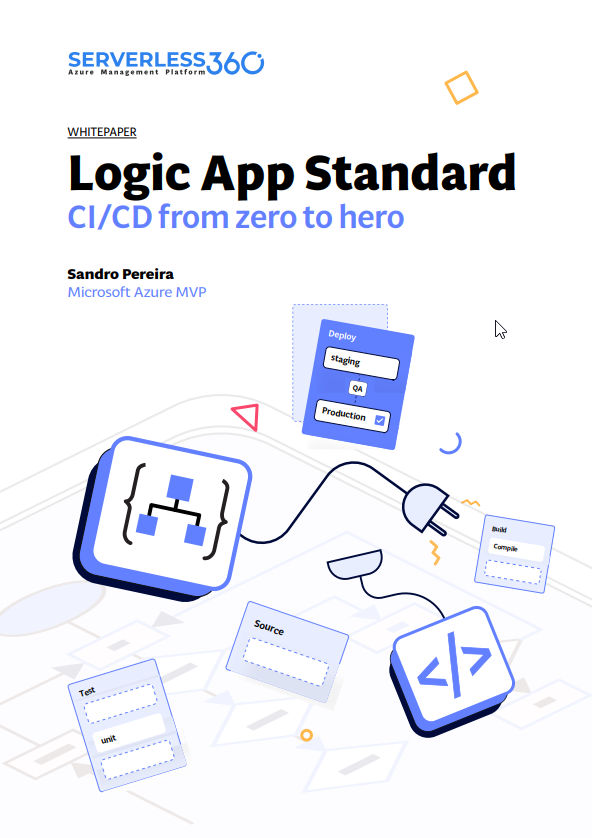Continuous integration/continuous delivery (CI/CD) pipelines are a practice focused on improving software delivery using a DevOps approach.
A CI/CD pipeline may sound like overhead, but it isn’t. It’s essentially a runnable specification of the steps that any developer needs to perform to deliver a new software product version. In the absence of an automated pipeline, Engineers would still need to perform these steps manually and, therefore, be far less productive.
This is a must to have when deploying resources to Azure! Especially for non-development environments.

In this whitepaper, I will address and explain in a detailed way a complete guide for automating the implementation of Logic Apps Standard using Azure DevOps Pipelines.
I will explain in detail all the basic things you have to know, from the creation of a Logic App Standard on Visual Studio Code to everything you need to create and configure inside DevOps to archive the implementation of the CI/CD process.
What’s in store for you?
This whitepaper will give you a detailed understanding of the following:
- An introduction to:
- What are Continuous Integration (CI) and Continuous Deployment (CD)?
- What are CI/CD Pipelines?
- What is Azure DevOps?
- Create an organization or project collection in Azure DevOps
- Create a project in Azure DevOps
- Building your Logic App Standard from scratch
- Publish your code from Visual Studio Code
- A step-by-step approach to building Azure Pipelines
- A step-by-step approach to building Azure Release Pipelines
Where can I download it
You can download the whitepaper here:
I hope you enjoy reading this paper and any comments or suggestions are welcome.


Hi Sandro,
I am working on a POC to use Azure logic apps standard which uses managed identity for access other azure resources. Ho could you do the development from VS code and set up CI/CD for this kind of requirement.
You can deploy directly from VS Code or/and CI/CD pipelines. Both options are supported.